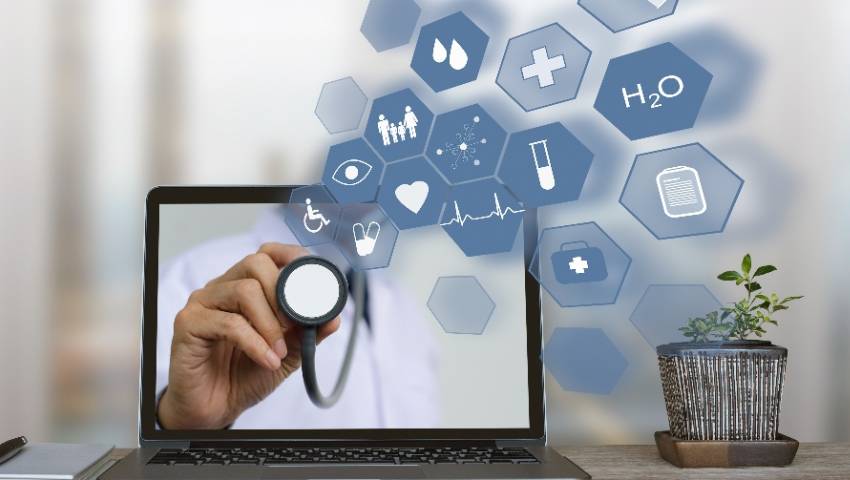
- 07/04/2020
- Dr. Srivatsan Gurumurthy
- 0 Comments
- Uncategorized
A Surgeon’s Take On Telemedicine and How It Is Effective In Today’s Times
Imagine a scenario where you could consult your Surgeons or doctor without having to travel, wait in the queue in the hospital/clinic or even avoid the risk of getting an infection from other patients waiting at the same place, especially in times like these where there is a viral pandemic- Welcome to the world of telemedicine.
Though they say there is no substitute to the physician’s touch while treating illness, in today’s real-world scenario it is still prudent and technically feasible to consult your doctor online and seek timely medical advice with a mobile phone/I pad/Laptop. Healthcare and other medical services can be easily accessed with the help of a smartphone. It has become more convenient to track, regulate, and monitor several details such as medicine intake, lab investigations and treatment. The communication gap between the patients and doctors for want of time and distance has reduced over the years owing to advancements in technology.
For years together, the medical student is taught that a proper history & thorough clinical examination is the basic prerequisite to arrive at a provisional diagnosis, prior to ordering investigations. The feel of the pulse, auscultation of the chest and placing the well-informed hand on the abdomen to feel the lumps and bumps can never be taken for granted. However, the COVID-19 pandemic is hastening the transition to a new model of remotely delivered healthcare that embraces the benefits of digital and data technologies. Though it may not be seen as a solution to the current crisis, it will have far-reaching repercussions in the days to come.
The concept of E-Health:
Telemedicine was conceptualised quite a long time back and has been steadily on the rise in recent times. However, it has not become a mainstream form of patient interaction because it defies the age-old custom of the physical visit to the doctor. Besides, it needed to overcome regulatory and commercial hurdles, also requiring a proper digital infrastructure that ensures a secure connection between patient and physicians. In India, the guidelines proposed a few years back were sanctioned by the centre to cope with the COVID-19 outbreak. Globally, telemedicine has also acquired validation with the Centers for disease control and prevention in the USA and the National Health Service in the UK.
As people face a nationwide lockdown and need medical consultations amidst travel restrictions, remote health care facilitates an important and growing need to fill in the void in the current scenario.
Since the beginning of March, the number of patients seeking teleconsultation on digital health care platform has more than tripled, as per reports. Apart from the patients facing an acute illness, wherein the services in the emergency set up in the hospital is life-saving, most of the other routine out-patient consultations can be managed through a digital interface, at least for the time being. Not only does it save time and cut commutes, when doctors see patients over audio or video calls, but the facilities can also conserve protective equipment for healthcare workers, which is of paramount importance today.
Telemedicine practice can prevent the transmission of infectious diseases, reducing the risks to both healthcare workers and patients. A telemedicine visit can be conducted without exposing staff to viruses/infections in times of such outbreaks.
Video visits are more efficient, requiring fewer health-care workers to manage the consultation, freeing them to work on other tasks. The use of chatbots, or “doctor-less” screening—once they have been studied and shown to be effective—is another means of easing the load on clinicians.
Patients concerned about symptoms can ask for guidance and the algorithmic system can respond with the most useful answers and further refer to the concerned specialist based on the requirement.
Current modern day mobile devices even have the facility to measure the pulse rate, oxygen saturation and going a step further also provide an ECG like tracing of heart rhythm which can substitute for the baseline evaluation over a telemedicine consult.

How useful is telemedicine:
Telemedicine can especially help people outside the big cities, where advanced medical infrastructure may be lacking and people have to travel a long distance to reach a reasonable healthcare facility quicker.
The path towards making remote health care a mainstay of current medical practice is not entirely smooth. The need exists, social acceptance exists and the technology definitely exists. However, despite the regulatory approvals in recent days, many hurdles remain.
Data shared over a network require special security which would be easier to ensure in a clinical setting and patients may be concerned that their medical data transmitted over the internet may be hacked or sold, which needs to be protected.
There are also challenges like the need for affordable, high-quality broadband access, smartphones and the assorted digital kit that connects to them remain expensive—which even though is available in a very large sector of the population currently, but it may not be viable for the poor or less tech-savvy elderly, who need these sorts of novel health-care solutions all the more.
Being physically apart is against the fundamental essence of medicine: the doctor’s touch, the ability to meet in-person and the intimacy that enables compassion and empathy. Sacrificing that in the current scenario,to the extent possible, is in the best interests of all patients and the health-care workers. Our available digital tools can keep us connected and this is the best time to harness the potential of the digital technology to provide better, faster and efficient health care amidst the pandemic crisis.
